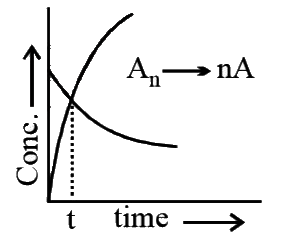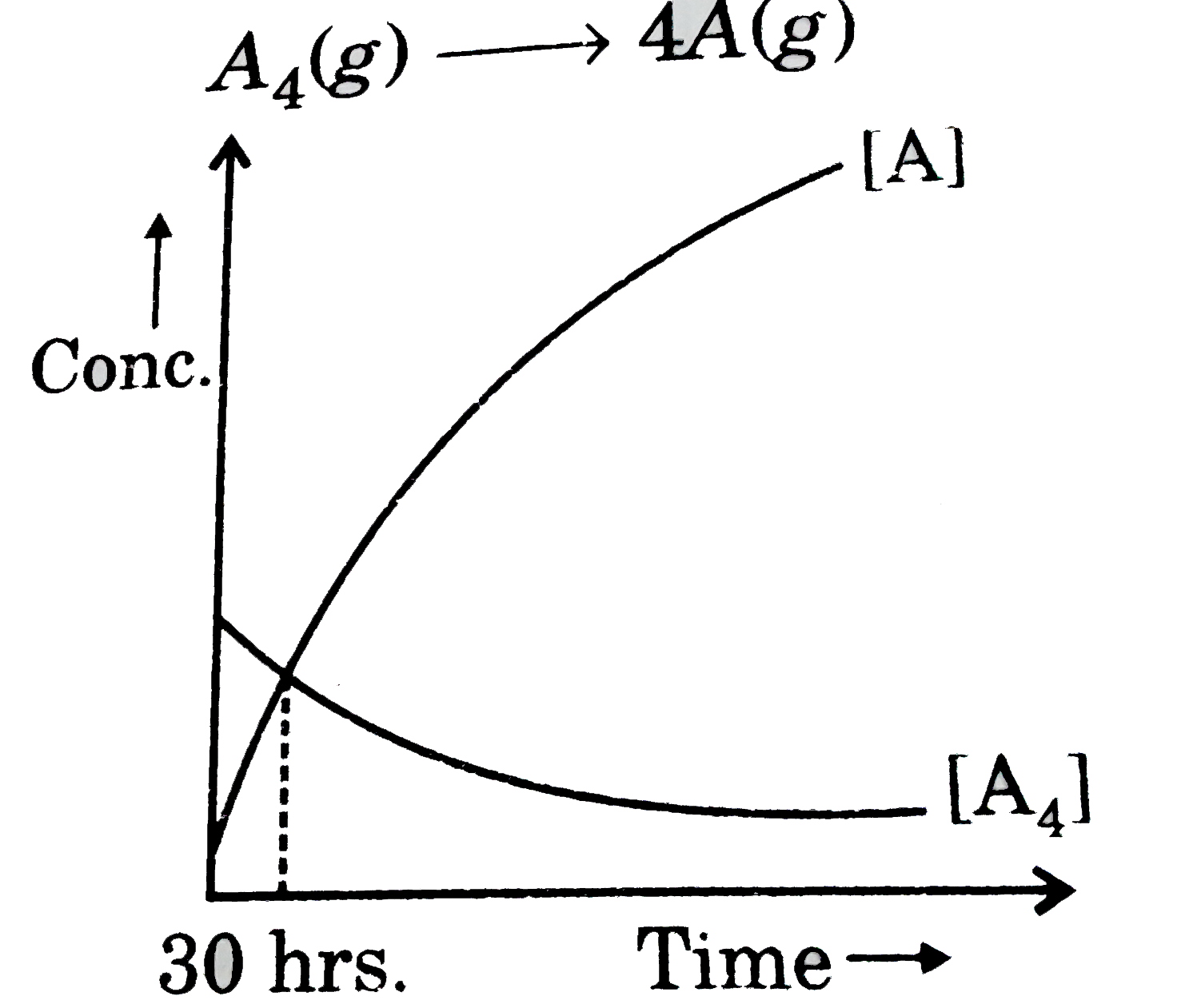Consider the following first order decomposition process:

Here, ''t'' corresponds to the time at which (16)th of reactant is decomposed. The value of ''n'' is
The correct Answer is:5
Step by step video & image solution for Consider the following first order decomposition process: Here, ''t'' corresponds to the time at which ((1)/(6))^(th) of reactant is decomposed. The value of ''n'' is by Chemistry experts to help you in doubts & scoring excellent marks in Class 12 exams.
Updated on:21/07/2023Topper's Solved these Questions
- Chemical KineticsBOOK - MOTIONCHAPTER - Chemical KineticsEXERCISE - Exercise - 2 (Level-II) (COMPREHENSION - 3)
4 Videos
- Chemical KineticsBOOK - MOTIONCHAPTER - Chemical KineticsEXERCISE - Exercise - 2 (Level-II) (COMPREHENSION - 4)
5 Videos
- Chemical KineticsBOOK - MOTIONCHAPTER - Chemical KineticsEXERCISE - Exercise - 2 (Level-II) (Zero order reaction, 1st order reaction, 2nd order reaction & nth order reaction)
9 Videos
- CHEMICAL EQUILIBRIUMBOOK - MOTIONCHAPTER - CHEMICAL EQUILIBRIUMEXERCISE - Exercise - 4
20 Videos
- CLASSROOM PROBLEMS BOOK - MOTIONCHAPTER - CLASSROOM PROBLEMS EXERCISE - Electrochemistry
22 Videos
Similar Questions
Knowledge Check
Consider the following first order decomposition and the accompanying concentration-time plot. Which of the following statements regarding the decomposition reaction is/are true?
 AAt 30 hrs, only 20% reaction is completeBHalf-life of the reaction is 90 hrs (approximately)CRate of decomposition decreasing linearly with timeDChanging initial concentration will changethe time at which the two curves are intersecting
AAt 30 hrs, only 20% reaction is completeBHalf-life of the reaction is 90 hrs (approximately)CRate of decomposition decreasing linearly with timeDChanging initial concentration will changethe time at which the two curves are intersectingValue of t1/2 for first order reaction is
A0.693KB0.2303KCR2D0.301kThe half-time of the following first order decomposition of nitramide is 2.1 h at 15∘C:
NH2NO2(aq)→N2O(g)+H2O(l)
If 6.2 g of nitramide is allowed to decompose then time taken for it to decompose 99%, will beA2.1 hB12 hC13.96 hD33 h
A first order decomposition reaction takes 40 minutes for 30% decomposition. Calculate its t1/2 value.
View SolutionA first order reaction takes 40 min for 30% decomposition. Calculate t1/2.
View SolutionA first order reaction takes 40 min for 30% decomposition. Calculate t1/2.
View SolutionA first order reaction takes 40 min for 30% decomposition. Calculate t1/2.
View SolutionConsider the following in respect of zero order reaction.
I. t1/2 is directly proportional to the initial concentration
II. Time taken for the completion of the reaction is twice its t1/2
III Concentration of the reactant decreases linearly with time
Which of the statements given above are correct ?
View Solution
